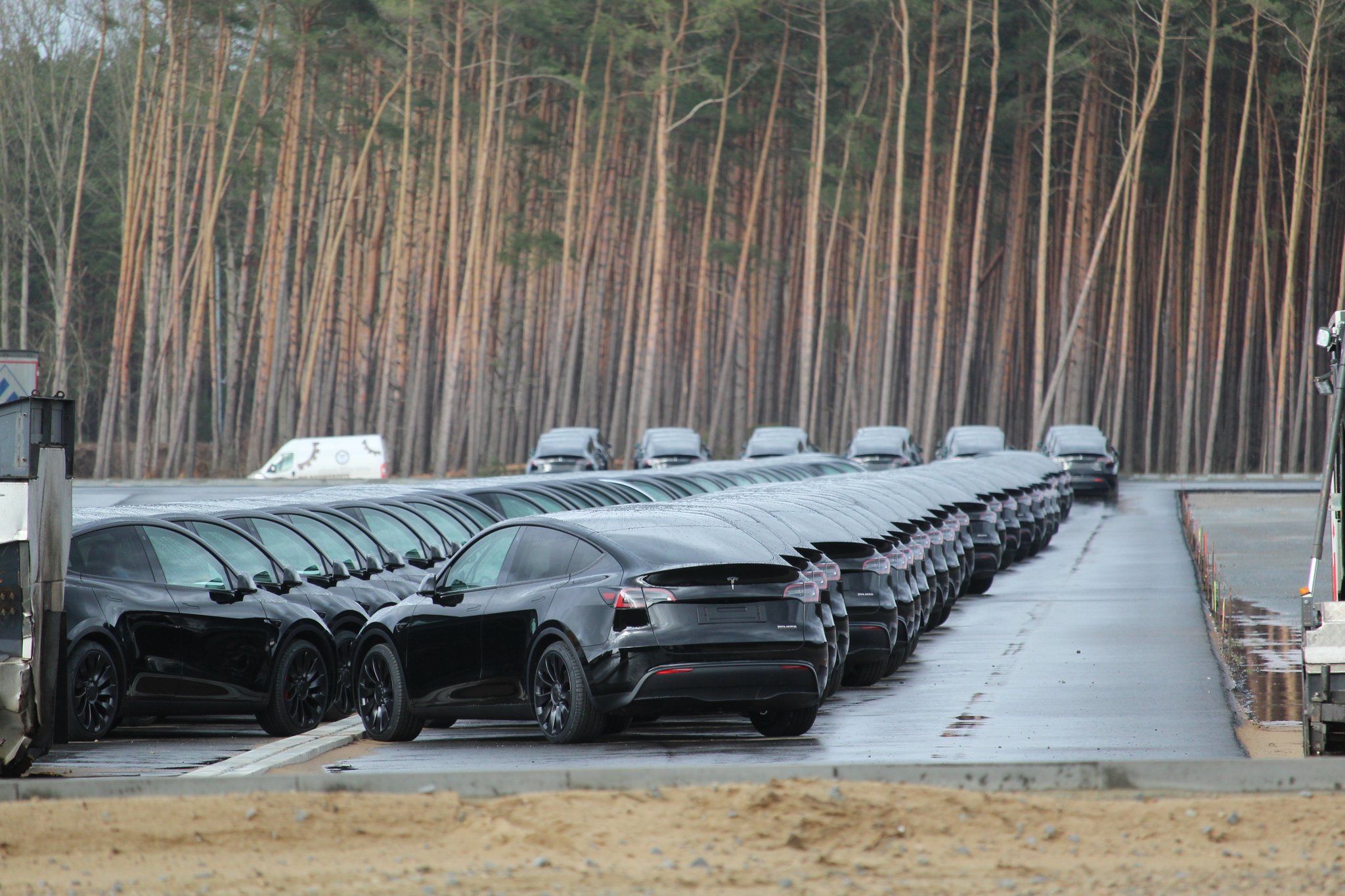
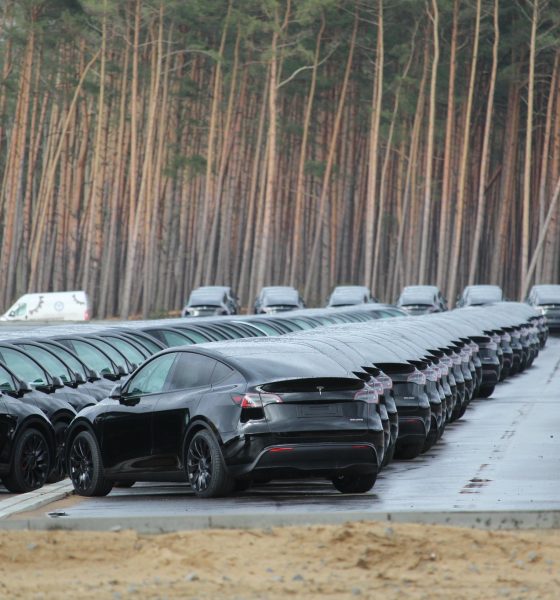
News
Tesla formally wins final environmental approval to open Gigafactory Berlin
The wait is finally over. After a long process that saw delays, controversies, and other drama, Tesla Gigafactory Berlin has won its final environmental approval from Germany. An official document confirming the update was published by the State of Brandenburg, outlining the next steps that the electric vehicle maker needs to do to start vehicle production in its Germany-based electric vehicle factory.
As per the state’s press release, the approval for Giga Berlin covers several activities, such as the production of up to 500,000 vehicles per year. The approval also includes battery cell production activities within the Giga Berlin complex, which should allow Tesla to manufacture its in-house cells from within Germany.
“The project, which was approved with the 536-page decision, includes the plant for the production of up to 500,000 vehicles per year, aluminum smelting plants and an aluminum foundry, plants for surface treatment, heat generation, and storage. The facility also includes battery cell production, an operational wastewater treatment plant, a fire brigade equipment house, a high-bay warehouse, as well as laboratories and workshops,” the press release read.
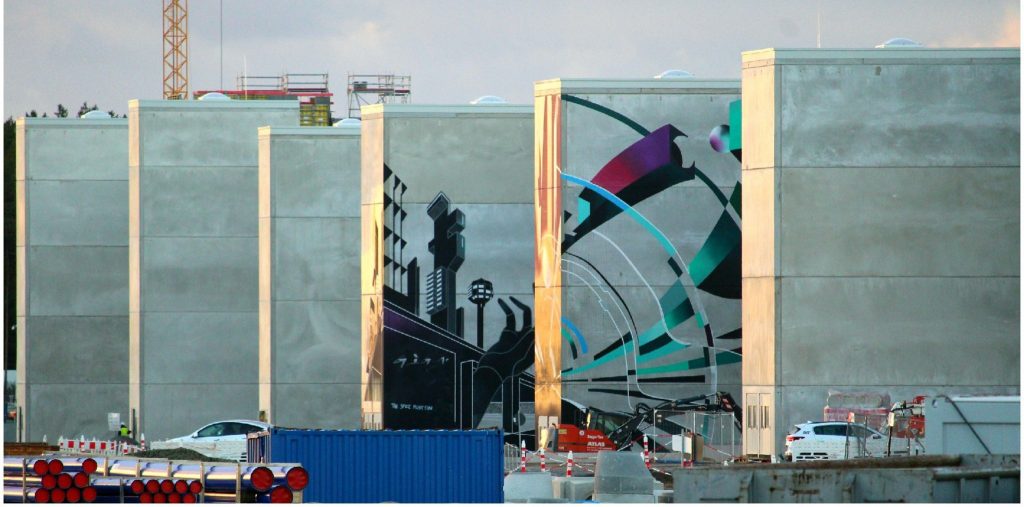
It should be noted that while it may have taken two years to get to this point, Gigafactory Berlin’s formal approval was still completed in a quick manner, at least relatively speaking. The past two years, after all, required the State Office of the Environment to not only inspect and approve the factory itself, but also the entire industrial area with several large-scale facilities. Environment Minister Alex Vogel expressed his thanks to the state’s employees and other authorities for Giga Berlin’s quick approval process.
“As a high-performing state administration, you have always focused on the technical requirements, the high level of protection of the environment, the protection of the general public and the neighborhood from dangers, even under the pressure of great public interest and unreasonable harassment as well as the legal certainty of the procedure. In times of climate crisis, the availability of water will play an increasingly important role for future developments and settlements. Above all, digitization can help to simplify and accelerate processes without restricting environmental standards and participation rights,” Vogel said.
District Administrator Rolf Lindemann emphasized that Giga Berlin benefits the region. The fact that the project faced much adversity, and was still able to achieve a milestone such as a final environmental approval in a relatively short time, proves that the project’s potential is vast. He also noted that Giga Berlin, as well as those that have been working with Tesla over the past two years to approve the project, shall face whatever challenges lie ahead with vigor.
“The Oder-Spree district described the Tesla Gigafactory as a real stroke of luck for the development of our region. We have therefore mobilized all our strength to help turn this unique opportunity into a visible success. It wasn’t always easy, and we’re anything but done when it comes to the final form of the overall project. But we all have reason to be proud of what we have achieved so far, despite all prophecies of doom.
“That is why we will face the further challenges that lie ahead with confidence and with undiminished vigor. I am referring to the official support of the further expansion stages, the completion of the battery factory and of great importance, especially for local politics: as far as possible, a stress-free integration of the Gigafactory into the traffic infrastructure . However, in order to be able to meet the sustainability aspect and smooth mobility in connection with production, it is of course necessary to start building housing close to the location and to create the associated social infrastructure. We trust in the same support from the state government that we have been able to rely on in the past,” Lindemann said.
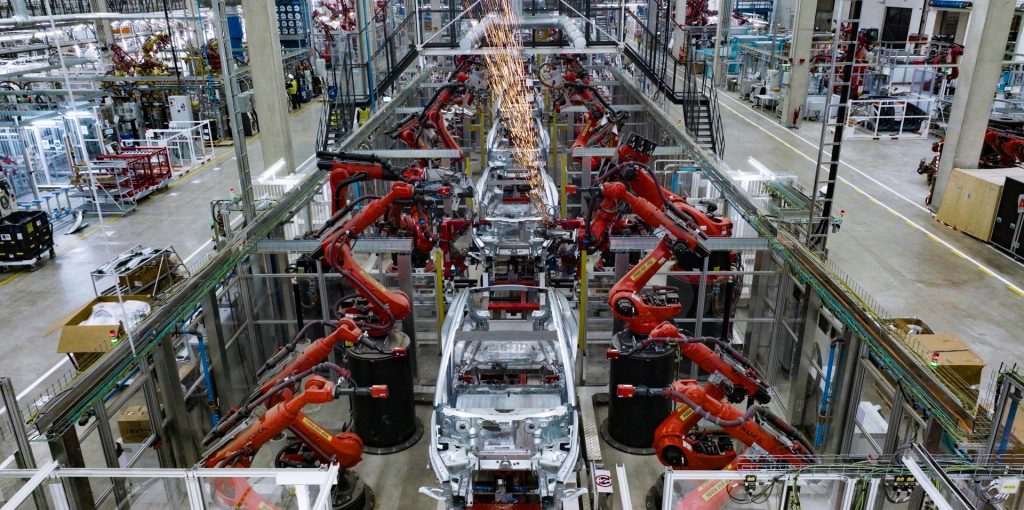
While Giga Berlin’s final environment approval has been secured, Tesla still has to ensure that it meets the state’s requirements. These are highlighted by the mammoth size of its approval documents, which comprise over 23,700 pages in 66 files. More than 400 ancillary provisions are included, involving topics such as requirements for groundwater protection as well as water-saving and wastewater-reducing measures, species protection measures, limit values for air pollutants and regulations on their measurement as well as occupational safety requirements. Other specific rules on the plant’s operations, particularly with regards to how it affects the area’s groundwater, were also highlighted in the press release.
“There are 113 air pollution control requirements, which include respective chimney heights for each exhaust air stream. In addition, 22 requirements determine the methods and intervals at which the exhaust air is to be measured. 96 requirements for drinking water protection, waste water disposal and rainwater specify, among other things, limit values for discharge into the waste water pressure line and corresponding cleaning processes. When using building materials, it is important to ensure that no harmful substances get into the groundwater. With groundwater monitoring, both the formation of new groundwater and the quality of the groundwater must be checked regularly. In view of the tense water situation, not least due to climate change, it should be possible to react to changes as early as possible.
“After the inspection by the approval authority, the entire system falls under the provisions of the Hazardous Incidents Ordinance (12th BImSchV) and must therefore take special precautions to prevent incidents and limit the effects of incidents, as well as maintain an appropriate safety distance from adjacent protected objects. Tesla must draw up an incident concept and comply with special information obligations,” the press release read.
The state noted that Tesla may now start or continue with the further construction of Giga Berlin and that objections to the project now have “no suspensive effect.” It should be noted, however, that before Tesla can actually put its Model Y production facility into operation, several ancillary provisions must be met first. These provisions, which include the installation of measuring devices for air pollutants and precautions for fire protection and accidents, will be checked by the responsible authorities. Once Tesla completes this step, Model Y production for customer vehicles could finally commence.
Needless to say, all eyes are now focused on how quickly Tesla can meet the requirements for Giga Berlin’s operational permit.
Don’t hesitate to contact us with news tips. Just send a message to simon@teslarati.com to give us a heads up.

News
Tesla’s northernmost Supercharger in North America opens
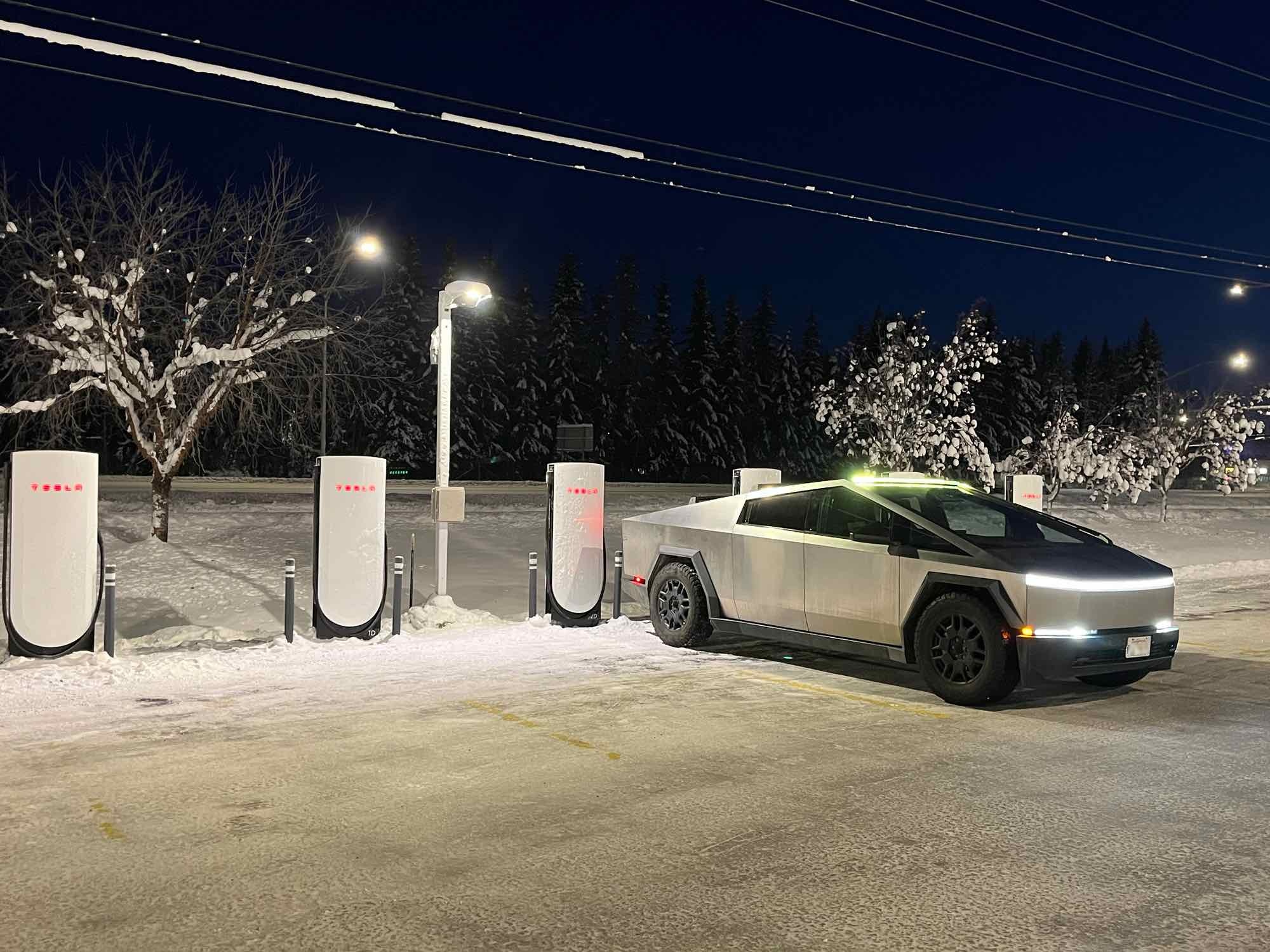
Tesla has opened its northernmost Supercharger in Fairbanks, Alaska, with eight V4 stalls located in one of the most frigid cities in the U.S.
Located just 196 miles from the Arctic Circle, Fairbanks’s average temperature for the week was around -12 degrees Fahrenheit. However, there are plenty of Tesla owners in Alaska who have been waiting for more charging options out in public.
There are only 36 total Supercharger stalls in Alaska, despite being the largest state in the U.S.
Eight Superchargers were added to Fairbanks, which will eventually be a 48-stall station. Tesla announced its activation today:
North America’s northernmost Supercharger Fairbanks, AK (8 stalls) opened to public. https://t.co/M4l04DZ6B5 pic.twitter.com/zyL6bDuA93
— Tesla Charging (@TeslaCharging) December 12, 2025
The base price per kWh is $0.43 at the Fairbanks Supercharger. Thanks to its V4 capabilities, it can charge at speeds up to 325 kW.
Despite being the northernmost Supercharger in North America, it is not even in the Top 5 northernmost Superchargers globally, because Alaska is south of Norway. The northernmost Supercharger is in Honningsvåg, Norway. All of the Top 5 are in the Scandanavian country.
Tesla’s Supercharger expansion in 2025 has been impressive, and although it experienced some early-quarter slowdowns due to V3-to-V4 hardware transitions, it has been the company’s strongest year for deployments.
🚨🚨 Tesla Supercharging had a HUGE year, and they deserve to be recognized.
🍔 Opened Tesla Diner, a drive-in movie theater with awesome, Chef-curated cuisine
🔌 Gave access to Superchargers to several EV makers, including Hyundai, Genesis, Mercedes-Benz, Kia, Lucid, Toyota,… pic.twitter.com/yYT2QEbqoW
— TESLARATI (@Teslarati) December 10, 2025
Through the three quarters of 2025, the company has added 7,753 stations and 73,817 stalls across the world, a 16 percent increase in stations and an 18 percent increase in stalls compared to last year.
Tesla is on track to add over 12,000 stalls for the full year, achieving an average of one new stall every hour, an impressive statistic.
Recently, the company wrapped up construction at its Supercharger Oasis in Lost Hills, California, a 168-stall Supercharger that Tesla Solar Panels completely power. It is the largest Supercharger in the world.
News
Tesla shocks with latest Robotaxi testing move
Why Tesla has chosen to use a couple of Model S units must have a reason; the company is calculated in its engineering and data collection efforts, so this is definitely more than “we just felt like giving our drivers a change of scenery.”

Tesla Model S vehicles were spotted performing validation testing with LiDAR rigs in California today, a pretty big switch-up compared to what we are used to seeing on the roads.
Tesla utilizes the Model Y crossover for its Robotaxi fleet. It is adequately sized, the most popular vehicle in its lineup, and is suitable for a wide variety of applications. It provides enough luxury for a single rider, but enough room for several passengers, if needed.
However, the testing has seemingly expanded to one of Tesla’s premium flagship offerings, as the Model S was spotted with the validation equipment that is seen entirely with Model Y vehicles. We have written several articles on Robotaxi testing mules being spotted across the United States, but this is a first:
🚨 Tesla is using Model S vehicles fitted with LiDAR rigs to validate FSD and Robotaxi, differing from the Model Ys that it uses typically
Those Model Y vehicles have been on the East Coast for some time. These Model S cars were spotted in California https://t.co/CN9Bw5Wma8 pic.twitter.com/UE55hx5mdd
— TESLARATI (@Teslarati) December 11, 2025
Why Tesla has chosen to use a couple of Model S units must have a reason; the company is calculated in its engineering and data collection efforts, so this is definitely more than “we just felt like giving our drivers a change of scenery.”
It seems to hint that Tesla could add a premium, more luxury offering to its Robotaxi platform eventually. Think about it: Uber has Uber Black, Lyft has Lyft Black. These vehicles and services are associated with a more premium cost as they combine luxury models with more catered transportation options.
Tesla could be testing the waters here, and it could be thinking of adding the Model S to its fleet of ride-hailing vehicles.
Reluctant to remove the Model S from its production plans completely despite its low volume contributions to the overall mission of transitioning the world to sustainable energy, the flagship sedan has always meant something. CEO Elon Musk referred to it, along with its sibling Model X, as continuing on production lines due to “sentimental reasons.”
However, its purpose might have been expanded to justify keeping it around, and why not? It is a cozy, premium offering, and it would be great for those who want a little more luxury and are willing to pay a few extra dollars.
Of course, none of this is even close to confirmed. However, it is reasonable to speculate that the Model S could be a potential addition to the Robotaxi fleet. It’s capable of all the same things the Model Y is, but with more luxuriousness, and it could be the perfect addition to the futuristic fleet.
News
Rivian unveils self-driving chip and autonomy plans to compete with Tesla
Rivian, a mainstay in the world of electric vehicle startups, said it plans to roll out an Autonomy+ subscription and one-time purchase program, priced at $49.99 per month and $2,500 up front, respectively, for access to its self-driving suite.

Rivian unveiled its self-driving chip and autonomy plans to compete with Tesla and others at its AI and Autonomy Day on Thursday in Palo Alto, California.
Rivian, a mainstay in the world of electric vehicle startups, said it plans to roll out an Autonomy+ subscription and one-time purchase program, priced at $49.99 per month and $2,500 up front, respectively, for access to its self-driving suite.
CEO RJ Scaringe said it will learn and become more confident and robust as more miles are driven and it gathers more data. This is what Tesla uses through a neural network, as it uses deep learning to improve with every mile traveled.
He said:
“I couldn’t be more excited for the work our teams are driving in autonomy and AI. Our updated hardware platform, which includes our in-house 1600 sparse TOPS inference chip, will enable us to achieve dramatic progress in self-driving to ultimately deliver on our goal of delivering L4. This represents an inflection point for the ownership experience – ultimately being able to give customers their time back when in the car.”
At first, Rivian plans to offer the service to personally-owned vehicles, and not operate as a ride-hailing service. However, ride-sharing is in the plans for the future, he said:
“While our initial focus will be on personally owned vehicles, which today represent a vast majority of the miles to the United States, this also enables us to pursue opportunities in the rideshare space.”
The Hardware
Rivian is not using a vision-only approach as Tesla does, and instead will rely on 11 cameras, five radar sensors, and a single LiDAR that will face forward.
It is also developing a chip in-house, which will be manufactured by TSMC, a supplier of Tesla’s as well. The chip will be known as RAP1 and will be about 50 times as powerful as the chip that is currently in Rivian vehicles. It will also do more than 800 trillion calculations every second.
Meet the Rivian Autonomy Processor.
Fast, smart, scalable and purpose-built for autonomous driving and the world of physical AI. Hitting the open road in 2026. pic.twitter.com/0wYXi5WKy7
— Rivian (@Rivian) December 11, 2025
RAP1 powers the Autonomy Compute Module 3, known as ACM3, which is Rivian’s third-generation autonomy computer.
ACM3 specs include:
- 1600 sparse INT8 TOPS (Trillion Operations Per Second).
- The processing power of 5 billion pixels per second.
- RAP1 features RivLink, a low-latency interconnect technology allowing chips to be connected to multiply processing power, making it inherently extensible.
- RAP1 is enabled by an in-house developed AI compiler and platform software
As far as LiDAR, Rivian plans to use it in forthcoming R2 cars to enable SAE Level 4 automated driving, which would allow people to sit in the back and, according to the agency’s ratings, “will not require you to take over driving.”
More Details
Rivian said it will also roll out advancements to the second-generation R1 vehicles in the near term with the addition of UHF, or Universal Hands-Free, which will be available on over 3.5 million miles of roadway in the U.S. and Canada.
More than any other feature, our owners have asked for more hands-free miles.
With Universal Hands-Free, you can now enjoy hands-free assisted driving on any road with clearly defined lanes. That’s roughly 3.5 million miles in the U.S. and Canada.
Look for it in our next… pic.twitter.com/ZFhwVzvt6b
— Rivian (@Rivian) December 11, 2025
Rivian will now join the competitive ranks with Tesla, Waymo, Zoox, and others, who are all in the race for autonomy.








